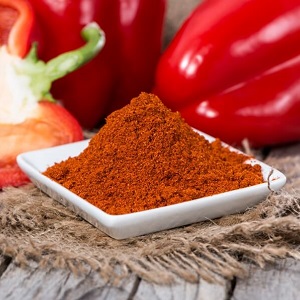- No. 268 Xianghe Street, Economic Development Zone of Xingtai city, Hebei 054001 China
- Byron@hbhongri.cn
sweet paprika spice
The Versatility and Allure of Sweet Paprika Spice
Sweet paprika, a vibrant and flavorful spice, is a staple in kitchens around the world, particularly in Central and Eastern European cuisines. Known for its captivating red hue and mild, slightly sweet flavor, sweet paprika is derived from ground bell peppers or other varieties of Capsicum annuum. Its versatility allows it to enhance a myriad of dishes, making it a must-have ingredient in any culinary repertoire.
The Culinary Journey of Sweet Paprika
The origins of sweet paprika can be traced back to the region of Hungary, where it has been cultivated since the 16th century. The Hungarians have perfected the art of paprika production, leading to the development of various paprika types, each defined by its color, flavor profile, and heat level. Sweet paprika, distinguished by its lack of spiciness, is perhaps the most popular variety and is celebrated for its ability to add flavor without overwhelming heat.
In Hungarian cuisine, sweet paprika is an essential ingredient in traditional dishes such as goulash, a hearty stew of meat and vegetables seasoned with a generous amount of paprika. The spice not only lends a warm color to the dish but also infuses it with a rich, sweet flavor that is synonymous with Hungarian culinary tradition. Beyond goulash, sweet paprika is commonly used in soups, stews, sauces, and as a seasoning for meats and fish, making it an integral part of everyday cooking.
Nutritional Aspects and Health Benefits
Sweet paprika is not only a flavor enhancer but also packs a nutritional punch. It is rich in antioxidants, particularly carotenoids, which contribute to its vibrant color. These antioxidants are known for their anti-inflammatory properties and potential health benefits, including improving eye health and boosting the immune system. Additionally, sweet paprika contains vitamins A, E, and C, as well as essential minerals such as iron and potassium. Incorporating sweet paprika into your diet can be a delicious way to enhance both flavor and nutrition.
sweet paprika spice

Beyond the Kitchen The Aesthetic Appeal of Sweet Paprika
One of the most striking attributes of sweet paprika is its stunning visual appeal. The bright red powder adds a pop of color to any dish, making it as much a feast for the eyes as it is for the palate. Chefs and home cooks alike often use sweet paprika as a garnish, sprinkling it over finished dishes to create an inviting presentation. Whether it's dusting a plate of deviled eggs or elevating the look of a creamy soup, sweet paprika acts as a colorful accent that can transform an ordinary meal into a culinary masterpiece.
Tips for Cooking with Sweet Paprika
When using sweet paprika, it’s essential to store it correctly to preserve its flavor and potency. Like most spices, sweet paprika should be kept in an airtight container, away from light and heat. This ensures that it maintains its vibrant color and sweet flavor for as long as possible.
When incorporating sweet paprika into your cooking, consider using it in both cooked and uncooked dishes. In cooked recipes, add the spice early in the cooking process to allow its flavors to develop, especially in stews and sauces. Alternatively, for dishes like hummus or dips, adding a sprinkle of sweet paprika just before serving can highlight its beautiful color and flavor without cooking away its essence.
Conclusion A Spice for Every Occasion
In conclusion, sweet paprika is more than just a spice; it is a culinary tradition steeped in history and flavor. Its sweet and mild taste, along with its vibrant color, makes it a favorite among chefs and home cooks alike. Whether you are using it to season meats, enliven soups, or create eye-catching garnishes, sweet paprika brings that special touch to any dish. As we continue to explore global cuisines and flavors, sweet paprika stands out as an invaluable ingredient that invites us to savor the rich tapestry of food culture while pleasing our palates with its distinctive flavor. So the next time you reach for that jar of sweet paprika, remember its journey and the vibrant contribution it makes to your culinary creations.
-
Turmeric Rhizome Powder: A Golden Treasure from Roots to TableNewsJul.28,2025
-
The Versatile Application Of Crushed Red Hot Peppers: Lighting Up The Red Flames On The Dining TableNewsJul.28,2025
-
The Paprika: A Touch Of Vibrant Red In Color, Flavor, And CultureNewsJul.28,2025
-
Ground Turmeric: A Modern Examination of an Ancient SpiceNewsJul.28,2025
-
Capsicum Liquid Extract: Features, Applications, and ChallengesNewsJul.28,2025
-
Application of Capsicum Liquid Extract in FoodNewsJul.28,2025







